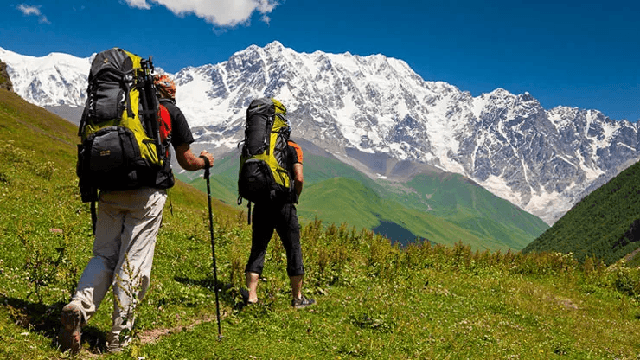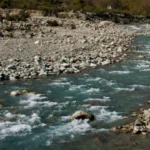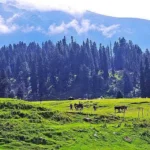Table of Contents
Toggle- Overview
- Set Your Trek Objectives and Schedule
- Create a Trekking Training Plan
- Research and Select Your Trekking Route
- Put Together Your Hiking Gear List
- Packing Smart: Weight Distribution and Techniques
- Nutrition and Hydration Strategies
- Mental Preparation and Safety Planning
- Weather Conditions and Multi-Layer Clothing
- Navigation and Trail Skills
- Environmental Responsibility on the Trail
- Final Checks and Pre-Trek Rituals
- Conclusion
- How to book Kashmir tour online?
- People Also Ask
- How do I start preparing for a trek?
- What is the ideal timeline for trek preparation?
- Which exercises build the best trekking fitness?
- How heavy should my backpack be during training?
- What essential gear should I pack for a multi-day trek?
- How do I choose the right hiking boots?
- What is the best way to layer clothing for variable weather?
- How much water should I carry on the trail?
- What foods provide optimal energy during trekking?
- How do I prevent blisters on a trek?
- What safety gear is essential for remote treks?
- How can I navigate without getting lost?
- What permits do I need for popular trekking regions?
- How do I acclimatize to high altitudes?
- What are top Leave No Trace principles for trekkers?
- How do I manage mental fatigue on a long trek?
- When should I replace my hiking gear?
- How do I pack efficiently to keep weight down?
- What’s the best way to train for steep ascents?
- How do I handle unpredictable mountain weather?
- What should I include in a trekking first-aid kit?
- How can I stay connected during a remote trek?
- What are the best apps for trekking route planning?
- How do I deal with altitude sickness symptoms?
- Can beginners attempt challenging treks safely?
- Inquiry Form
Overview
Preparing for a trek is both an art and a science. Whether you’re planning a weekend escape into rolling hills or an ambitious mountain expedition, a well-thought-out trekking plan sets the foundation for safety, comfort, and unforgettable memories. In this comprehensive guide on how to prepare for a trek, you’ll find everything from physical training tips to gear recommendations, nutrition strategies, and safety best practices. We will also incorporate catchy phrases such as trek preparation, hiking gear list, trekking training program, and backpacking necessities so that this article reaches other outdoor enthusiasts and appears towards the top in search engines.
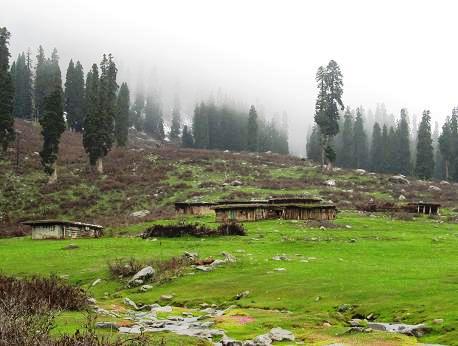
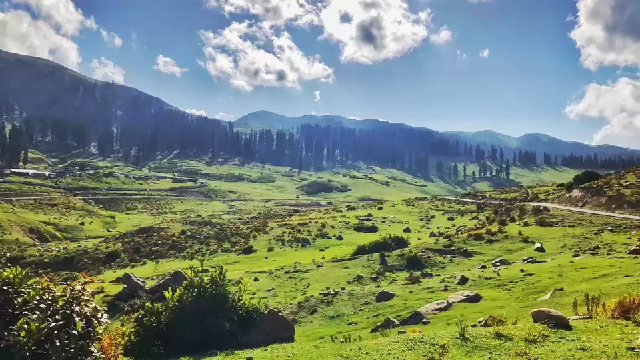
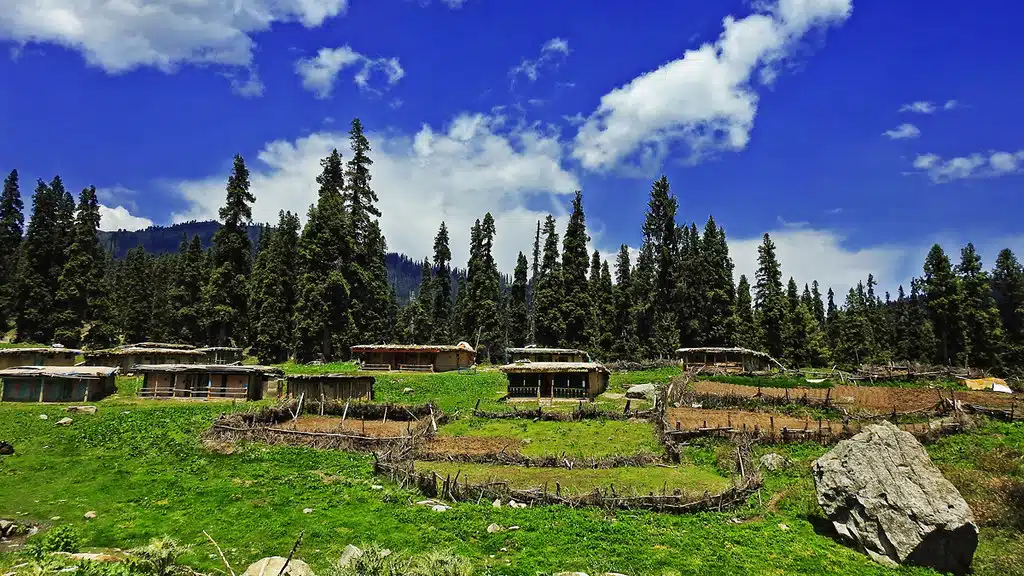
Set Your Trek Objectives and Schedule
Take a little time before you shop for equipment or join a gym to establish your goals. Are you embarking on a moderate three-day hike or a seven-day Himalayan trek? Setting realistic goals enables you to tailor your trekking fitness regimen and create a realistic itinerary. Ask yourself:
- Distance and Duration: How far per day can you walk?
- Elevation Gain: Will you be traversing steep mountains, high altitude, or rolling valleys?
- Season and Weather: Is your trek during the rainy season, winter snowpack, or temperate spring?
Having your objectives set, begin a reverse timeline: subtract training weeks, gear-shopping days, and rest intervals to arrive at your departure date. This organized planning of trek preparation prevents last-minute scrambles and cost overruns.
Create a Trekking Training Plan
A successful hike begins several weeks before you lace up your boots. Aerobic training, strength training, and flexibility exercises form the basis of any hike training program:
Cardiovascular Endurance
- Frequency: 3–5 per week
- Activities: Trail running, cycling, stair climbing
- Duration: 30–60 minutes; increase intensity progressively
Strength and Stability
- Focus Areas: Legs (quads, hamstrings, calves), core (abdominals, lower back), and upper body (shoulders, arms for pole support)
- Exercises: Lunges with weight vest, step-ups, planks, push•ups
- Sets/Reps: 3–4 sets of 8–12 reps
Flexibility and Mobility
- Daily Routine: 10–15 minutes of dynamic stretching before exercising; static stretches after exercising
- Key Stretches: Hip flexor stretches, calf stretches, hamstring stretches, spinal twists
Endurance Hikes
- Progression: Start with local trails, then add weight in backpack to simulate backpacking essentials weight
- Goal: Complete at least two day-long hikes with 10–15 kg
By taking this step-by-step trekking fitness program, your body adapts to be able to provide the physical requirements of steep mountain sides, boulder-strewn terrain, and multi-day hiking.
Research and Select Your Trekking Route
Selecting your route is equally as vital as training. Steep mountain ridges or verdant forest trails – do as you please, but note:
- Difficulty Rating: Beginner, intermediate, or advanced
- Trail Conditions: Seasonal closure, river crossing, glacier area
- Permits and Regulations: Advance reservation required in national parks
- Accommodation Facilities: Tents, mountain huts, guesthouses
Firsthand trail reports are available on websites, guidebooks, and trekking forums in local areas. While planning your top treks, consider scenery diversity, wildlife sightings, and proximity to rescue teams. Create a folder or digital note with maps, waypoints, and emergency contact numbers to keep trek planning organized in advance.
Put Together Your Hiking Gear List
A thoughtfully prepared list of hiking equipment guarantees you carry what you need—nothing more, nothing less. Sort your gear into the following categories:
Backpack and Carry Systems
- Backpack (40–60 L): Choose an adjustable harness, ventilated mesh back panel, and rain cover.
- Daypack (20 L): For side excursions and summit attempts.
Footwear
- Hiking Boots: Waterproof, ankle support, broken in before you leave.
- Hiking Socks: Moisture-wicking merino blend; carry 3–4 pairs.
- Gaiters: To exclude gravel, snow, or mud.
Layers of Clothing
- Base Layer: Merino wool or synthetic quick-dry shirts and legging.
- Fleece or lightweight down jacket.
- Waterproof, breathable rain jacket and rain pants.
- Synthetic/down packable sweater for cold high-altitude nights.
Shelter and Sleeping System
- Tent: Sturdy-pole 3-season with vestibules.
- Sleeping Bag: At least 5°C rated below anticipated nighttime low temperatures.
- Insulated foam or inflatable sleeping pad for warmth and comfort.
Cooking and Hydration
- Lightweight canister or liquid-fuel stove.
- Cookware: Aluminum or titanium pot, spork, mug.
- Hydration: Water bottles (1 L per) + capacity 2–3 L; water filter or purification tablets.
- Fuel: 1–2 fuel canisters or fuel bottles, depending on trip length.
Navigation and Electronics
- Topo Maps and Compass: Physical back-up in waterproof sleeve.
- GPS Device or Smartphone App: Pre-loaded waypoints; back-up battery or power bank.
- Headlamp: With extra batteries.
- Solar Charger: Optional, for multi-day treks.
First Aid and Emergency Kit
- Basic First-Aid: Bandages, antiseptic wipes, sterile gauze, medical tape.
- Repair Kit: Multi-tool, duct tape, patch kits.
- Emergency Shelter: Space blanket or bivvy bag.
- Whistle and Signal Mirror: To signal for attention.
Personal Items
- Sunscreen: SPF 30+; lip balm with UV protection.
- Insect Repellent: DEET or picaridin-based.
- Toiletries: Biodegradable soap, toothbrush, quick-dry towel.
- Documents: ID, permits, cash, credit card in waterproof pouch.
This full trekking equipment list prevents neglect and maintains pack weight in order.
Packing Smart: Weight Distribution and Techniques
It’s just as vital to learn how to pack for a trek as it is to select the right equipment. Follow these rules:
- Heavy Things Close to Your Back
- Place the stove, food, and water close to your back and in the middle between shoulder blades.
- Medium Weight Midpack
- The middle compartment is loaded with clothing layers and sleeping bag.
- Light Things at the Bottom and Top
- Sleeping pad at bottom; rain jacket, map, snacks at top for quick retrieval.
- Use Compression Sacks and Dry Bags
- Flatten flat bulky items; keep clothes and electronics dry.
- Balance Side Pockets and Hipbelt Pouches
- Phone, snacks, sunscreen within reach; don’t overbalance one side.
Application of these backpacking techniques minimizes stress, maximizes balance, and enhances your trekking experience.
Nutrition and Hydration Strategies
Caloric requirements on the trail are excellent: budget for 2,500–4,000 kcal per day depending on terrain and elevation. Key tips for trekking nutrition:
Meal Planning
- Breakfast: Instant oats, powdered milk, dried fruit.
- Lunch: Tortillas with nut butter, energy bars, dehydrated meals.
- Dinner: Freeze-dried meals or couscous with powdered sauce mixes.
Snacks and Quick Energy
- Trail mix, chocolate, electrolyte chews, jerky.
Hydration
- Drink 0.5–1 L per hour of hiking; adjust depending on heat and elevation.
- Use a hydration bladder for regular sips; supplement with water bottles.
- Treat all water sources: filters cut out sediments and bacteria; purification tablets target viruses.
Electrolyte Balance
- Carry powdered electrolyte mixes to replenish sodium, potassium, magnesium lost in sweat.
- Consume small, regular meals level out blood sugar, maintain energy levels, and aid recovery. Together with a well-planned trekking training schedule, this approach conditions your body for extended exercise.
Mental Preparation and Safety Planning
Physical prowess means nothing without a strong attitude. Practice mental toughness by:
- Visualization: Visualize yourself winning through challenging climbs, negotiating difficult passes, and toasting summit victories.
- Stress Inoculation: Mimic uphill struggles with heavy packs; acclimatize to being a little uncomfortable.
- Positive Self-Talk: Encourage mantras such as “One step at a time” or “I am ready.”
Safety planning is not optional:
- Emergency Contacts: Give a friend or local official your itinerary.
- Check-In Strategy: Organize communication check points—satellite messenger or cell phone—especially in isolated terrain.
- Understand Evacuation Procedures: Understand closest rescue spots, helicopter pads, and route of escape.
- Local Wildlife Acumen: Study animal habits (bears, snakes, big cats) and carry deterrents if necessary.
Combining mental toughness with diligent trek planning disciplines places you in a strong position to overcome any surprise hurdle.
Weather Conditions and Multi-Layer Clothing
Mountain weather is notoriously unpredictable. Master layering:
- Base Layer: Wears off moisture; dries skin.
- Insulation Layer: Keeps body heat in; light fleece or down.
- Shell Layer: Keeps wind and rain out; breathable GORE-TEX or equivalent.
Always bring an extra thermal layer for high-altitude camps where it could fall below freezing at night. Bring a buff or neck gaiter, lightweight gloves, and a warm hat. Use good weather apps and local forecasts in the days leading up to departure—and be willing to re-route if storms are brewing.
Navigation and Trail Skills
Even on well-marked trails, navigation errors happen. Learn these skills:
- Map Reading: Identify contour lines, elevation profiles, and prominent landmarks.
- Compass Use: Recite bearing-takings and track azimuths.
- GPS Familiarity: Load offline maps (GPX/KML) onto your device; know how to calibrate GPS.
- Trail Etiquette: Yield to uphill hikers; stay on marked trails to conserve vegetation.
A small navigation kit of map, compass, and GPS reserve keeps you on track, even when clouds obfuscate mountain vistas.
Environmental Responsibility on the Trail
- Leave No Trace ethic preserves wildland for future generations. Incorporate these practices in your trekking planning:
- Plan Ahead and Prepare: Minimize waste by portioning food beforehand and utilizing disposable containers.
- Travel and Camp on Durable Surfaces: Travel on rock, gravel, or dry grass when camping.
- Dispose of Waste Properly: Take all litter home; bury human waste at least 60 m away from water sources.
- Minimize Campfire Impacts: Camp stoves, not open fires; light fires only where permitted.
- Respect Wildlife: View from a distance; do not feed wildlife.
- Be Considerate of Other Visitors: Avoid noise; yield to others.
By integrating sustainability into each phase of your trekking training plan, you are a positive contribution to outdoor stewardship.
Final Checks and Pre-Trek Rituals
In the days leading up to departure day, conduct a final pre-trek checklist
- Gear Trial Run: Walk 5–10 km with full pack to discover discomfort or missing gear.
- Document Copies: Make electronic copies of permits, IDs, and medical information.
- Weather Re-Check: Review forecasts 24 h before departure; alter clothing or route if needed.
- Inform Stakeholders: Send updated itinerary and estimated check-in times to friends or family.
A brief night of meditation or yoga soothes frazzled nerves and focuses the mind on the adventure ahead.
Conclusion
Mastering preparation for a trek is an adventure unto itself. From establishing definitive objectives and creating a trekking training regimen to assembling a master list of hiking equipment and training in Leave No Trace techniques, each step adds security and fun. Embrace both the physical challenge and the mental transformation that trekking offers. With disciplined preparation, you’ll be ready to conquer ridges, ford rivers, and stand atop summits—confident that your well-oiled trek preparation machine has your back. Lace up those boots, shoulder your pack, and set off on the hiking adventure of a lifetime!
How to book Kashmir tour online?
Contact Brown Chinar at +91 6005039532/+91 9906188874 or Email us at : Enquiry@brownchinarkashmir.com
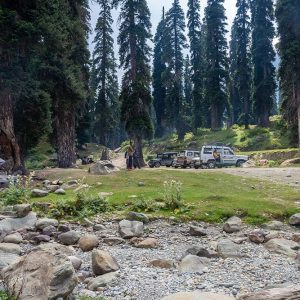

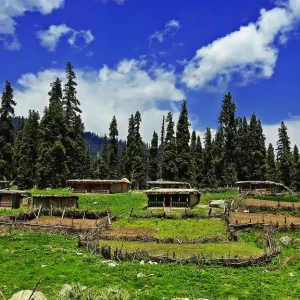

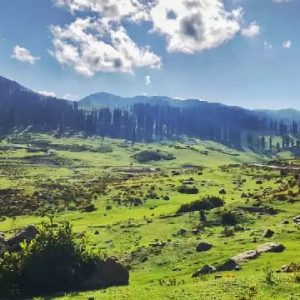
People Also Ask
How do I start preparing for a trek?
Begin by setting clear goals—distance, elevation, and duration. Create a structured trekking training plan that blends cardiovascular workouts, strength training, and endurance hikes. Gradually increase the weight in your backpack to simulate real conditions and prevent injury.
What is the ideal timeline for trek preparation?
Plan at least 8–12 weeks before departure. Use the first 4–6 weeks for base fitness building and the last 4–6 weeks for load-bearing hikes and route-specific conditioning. This allows time for gear selection, permit processing, and final practice hikes.
Which exercises build the best trekking fitness?
Focus on leg strength (lunges, squats, step-ups), core stability (planks, Russian twists), and cardio (trail running, cycling). Include hill repeats or stair climbs with a weighted backpack to mimic uphill terrain and improve endurance.
How heavy should my backpack be during training?
Start with 10 kg (22 lb) and gradually increase to 15–18 kg (33–40 lb), about 20–25% of your body weight. This range aligns with typical backpacking essentials and conditions your body for full-load hikes.
What essential gear should I pack for a multi-day trek?
Core items include a 40–60 L backpack, waterproof hiking boots, layered clothing, tent, sleeping bag rated below expected lows, stove, hydration system, navigation tools, first-aid kit, and repair supplies. Tailor choices to climate and terrain.
How do I choose the right hiking boots?
Look for waterproof construction, rigid soles for rocky terrain, and ankle support. Always break in boots during day hikes to prevent blisters, and pair them with moisture-wicking socks to maintain foot health.
What is the best way to layer clothing for variable weather?
Use a three-layer system: a moisture-wicking base layer, an insulating mid layer (fleece/down), and a waterproof-breathable shell. Adjust layers as temperature and exertion change to stay dry and warm.
How much water should I carry on the trail?
Aim for 3–4 L per day, adjusting for heat and altitude. Use a combination of bottles and a hydration bladder for easy access. Always carry a water filter or purification tablets to refill safely from natural sources.
What foods provide optimal energy during trekking?
Prioritize carbohydrates and healthy fats: oatmeal, energy bars, trail mix, jerky, nut butters, and freeze-dried meals. Snack every 1–2 hours to maintain blood sugar and hydration.
How do I prevent blisters on a trek?
Wear well-fitted boots, break them in early, and use moisture-wicking socks. Apply blister patches or tape to hotspots before hiking. Keep feet dry by changing socks and airing them during breaks.
What safety gear is essential for remote treks?
Carry a satellite messenger or personal locator beacon, headlamp with extra batteries, emergency shelter (space blanket), whistle, and a robust first-aid kit. Share your itinerary with someone reliable.
How can I navigate without getting lost?
Combine paper maps, compass skills, and GPS devices with preloaded tracks. Practice map reading and compass bearings before the trek. Keep devices charged and carry spare power banks.
What permits do I need for popular trekking regions?
Research destination-specific regulations—national parks like Yosemite or the Everest Base Camp require permits, fees, and sometimes mandatory guides. Apply early online or through authorized agents.
How do I acclimatize to high altitudes?
Ascend gradually, following the “climb high, sleep low” principle. Spend extra nights at intermediate elevations, hydrate well, and consider altitude medication like acetazolamide after consulting a doctor.
What are top Leave No Trace principles for trekkers?
Plan ahead, stick to durable surfaces, pack out all waste, minimize campfire impact, respect wildlife, and be considerate of other visitors. These ethics protect ecosystems and ensure sustainable trekking.
How do I manage mental fatigue on a long trek?
Use positive self-talk (“one step at a time”), break the route into small goals, and practice mindfulness or breathing techniques. Visualization during training also builds mental resilience for challenging sections.
When should I replace my hiking gear?
Inspect boots annually and replace if soles are worn or uppers are compromised. Tent fabrics degrade with UV exposure—plan for replacement every 3–5 years. Update sleeping bags when insulation clumps or loft diminishes.
How do I pack efficiently to keep weight down?
Use ultralight gear, compress bulky items in sacks, and share communal equipment when in groups. Prioritize multifunctional items (e.g., a buff as scarf/face protection) to reduce overall pack weight.
What’s the best way to train for steep ascents?
Incorporate stair climbing, hill repeats on local trails, and weighted step-ups. Aim for workouts with 300–600 m of elevation gain per session to simulate mountain inclines and boost leg endurance.
How do I handle unpredictable mountain weather?
Monitor local forecasts daily, carry weatherproof gear, and build flexibility into your itinerary. Establish turnaround times on summit bids and know alternate lower-elevation routes in case of storms.
What should I include in a trekking first-aid kit?
Essentials: adhesive bandages, blister pads, sterile gauze, medical tape, antiseptic wipes, pain relievers, antihistamines, altitude sickness medication, and personal prescriptions. Tailor to group size and trip length.
How can I stay connected during a remote trek?
Use satellite communicators (e.g., Garmin inReach), satellite phones, or local SIM cards if available. Pre-arrange check-in schedules and emergency contacts for reassurance and safety.
What are the best apps for trekking route planning?
Gaia GPS, AllTrails, and ViewRanger offer offline topographic maps, route creation, and waypoints. Sync with GPS devices and download maps before departure to ensure access without cell coverage.
How do I deal with altitude sickness symptoms?
Mild symptoms (headache, nausea) often improve with rest and hydration. Descend immediately if severe signs (shortness of breath at rest, confusion) occur. Always acclimatize slowly and consider prophylactic medication.
Can beginners attempt challenging treks safely?
Yes—with thorough preparation, guided support, and realistic pacing. Start with easier trails to build confidence, invest in a structured training plan, and consider hiring experienced local guides for technical terrain.

